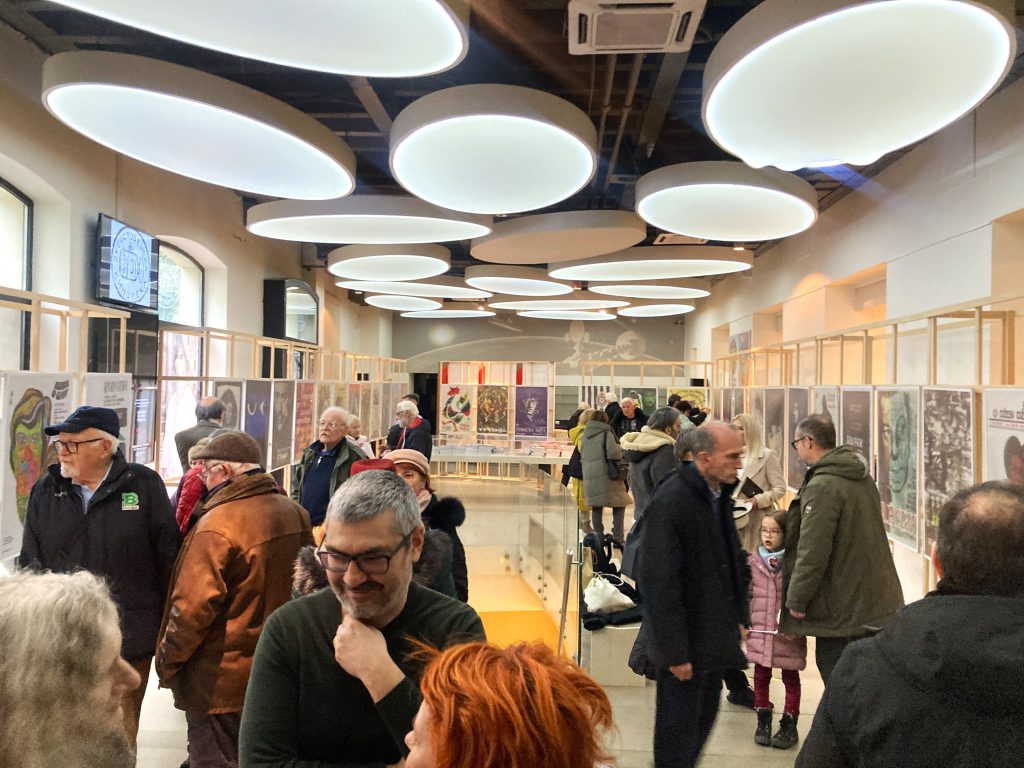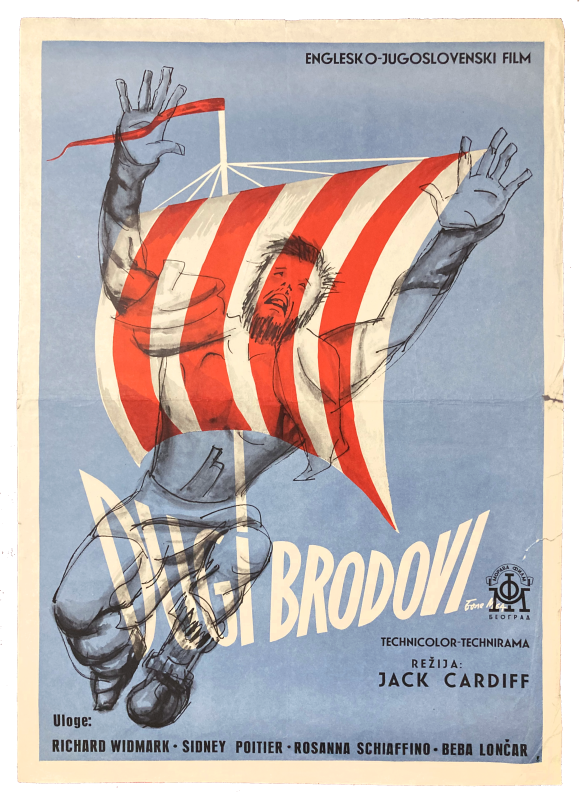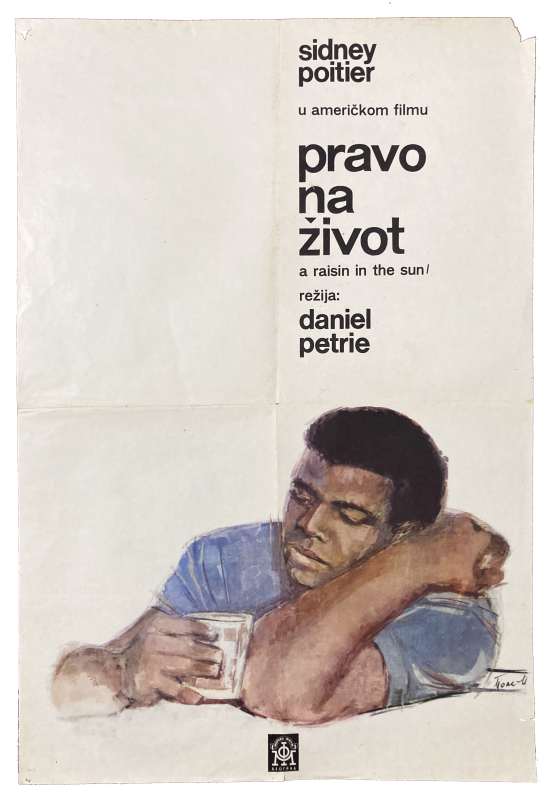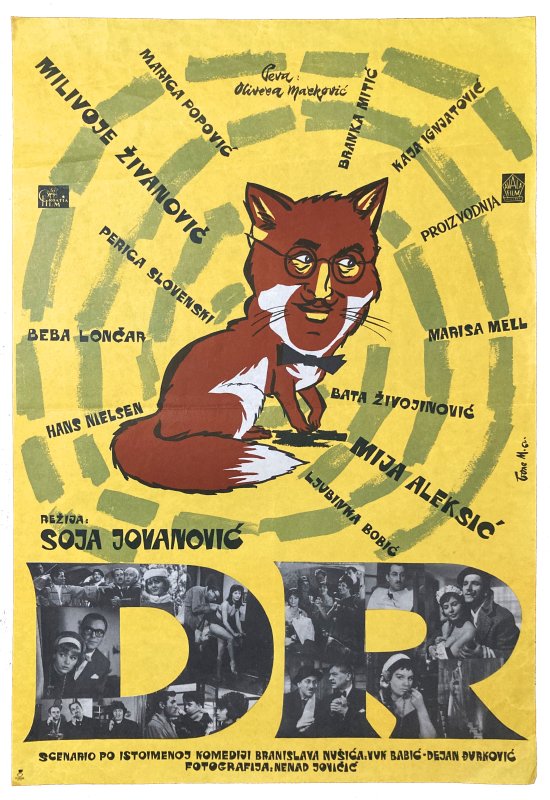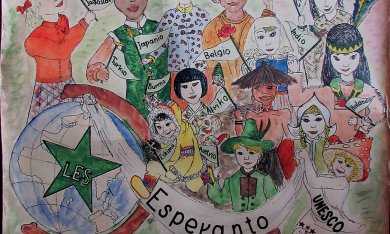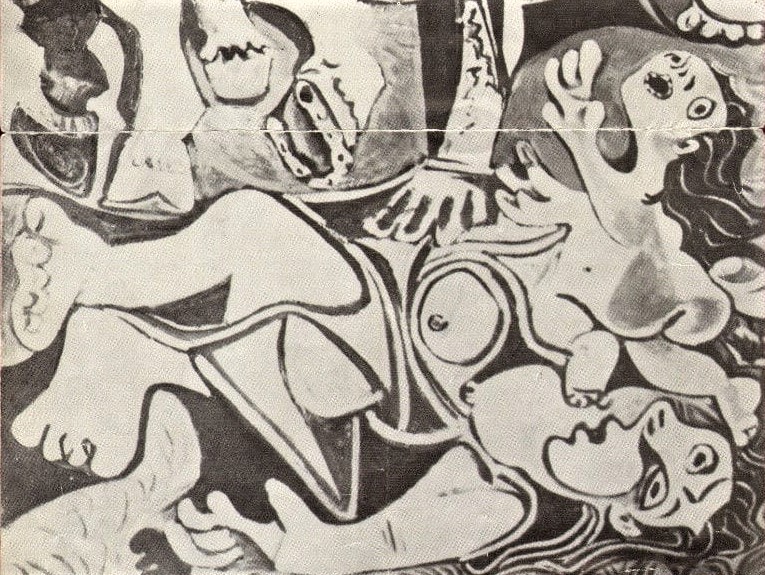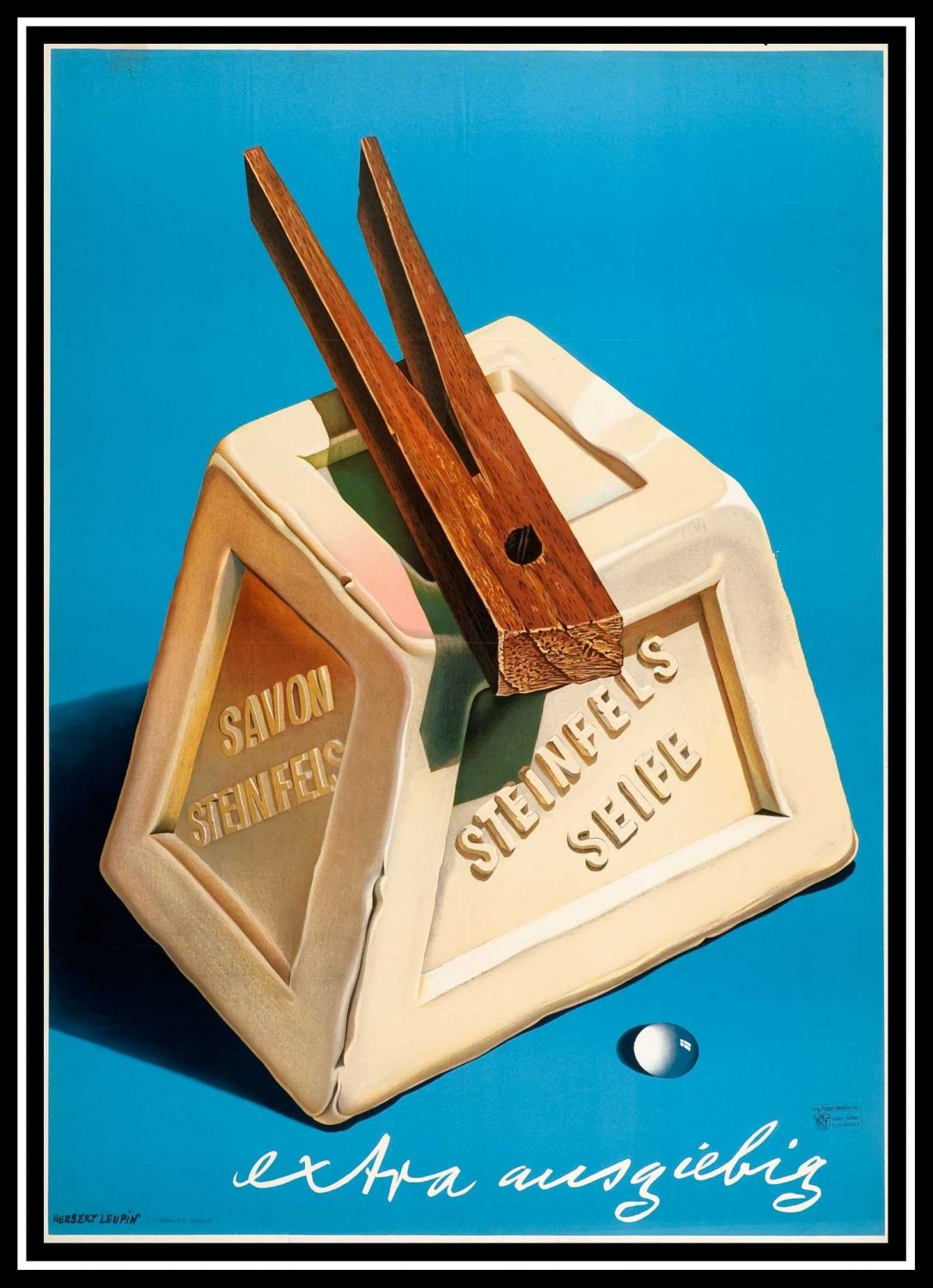
Blog
Artistic Tapestry of Bole Miloradovic: A Cinematic Journey through Vintage Posters

Artistic Tapestry of Bole Miloradovic: A Cinematic Journey through Vintage Posters
The other day, an event unfolded, capturing my immediate attention with a familiar picture. Having memorized every vintage poster in my collection, it was impossible not to recognize the distinctive illustration of the movie “Razzia”. Surprisingly, it dawned on me just how many posters by the same artist adorned my collection when I visited the exhibition of Božidar Bole Miloradović.
 Yugoslav Film Archive Exhibition
Yugoslav Film Archive Exhibition
On Tuesday, January 23, the Yugoslav Film Archive (Jugoslovenska Kinoteka) hosted the opening of an exhibition showcasing an integral part of the artist’s prolific work in the realm of film posters from 1960 to 1970. The exhibited posters, adorned with Bole Miloradović’s unique graphic style, highlighted iconic achievements in both domestic and foreign cinematography.
The event, though small with around 40 posters and attendees, marked the beginning of a series of exhibitions commemorating the 75 years of the Archive’s operation in 2024. Irina Kondić, the Curator of the Yugoslav Film Archive, expressed her satisfaction with featuring the works of such a significant artist.
Curiosity led me to explore these posters, but unfortunately, the accompanying plaques offered no additional insights. I had to do some digging.
Bole Miloradovic: Journey from Protests to Posters
Born near Kragujevac in 1934, Miloradović pursued architecture studies in Belgrade. His artistic journey began when he secured a job as an illustrator for movie screenings in the Student City. However, his involvement in student protests against rent and food price increases in 1954 led to imprisonment, expulsion from the University, and job loss. Undeterred, he found employment in the circus, continuing to create attractive posters.
Miloradović’s talents extended beyond posters; he worked on fair stand equipment, suggested window displays, and crafted advertising texts. Renowned for his text layout and topographic play, he became a crucial figure in book decoration, leaving his mark as a painter, graphic artist, calligrapher, and illustrator.
Lazar Trifunović, reflecting on Miloradović’s skill in working with text, remarked, “The layout of the text and the topographic play represent one of the more important characteristics of Miloradović’s graphic handwriting.” With original, witty, and daring solutions, Miloradović became an indispensable name in the field of book decoration, leaving an indelible mark on over a hundred books for various domestic publishers.
A true pioneer in the production of contemporary movie posters, Miloradović’s artistic lucidity and painterly originality garnered him the most important awards in cultural and commemorative posters, as well as in the field of fine art and graphic books. Over a hundred exhibitions celebrated his artistic contributions, and in recognition of his outstanding cultural contribution in the Republic of Serbia, he was honored with a national pension.
Vintage Posters and the Discontinued Cinematic Tradition
Armed with newfound knowledge about Miloradović’s journey, I delved into my personal collection, seeking posters bearing his signature. What unfolded was a fascinating tapestry of styles that showcased the evolution of Miloradović’s artistic expression. From
traditional early ’60s portraits on pastel backgrounds to intricate drawings featuring unique typography, and avant-garde collages seamlessly blending photos and graphic design, each poster spoke to the dynamic nature of cinematography during that era.
Miloradović’s diverse stylistic approach seemed to mirror a discontinuity in cinematic production, interrupted by wars. The decade that followed allowed for the revival and reintroduction of cinematic heritage, leaving its mark on artistic trends. The posters, in their varied forms, encapsulated not just the aesthetics of the time but also the resilience and creativity that emerged from a disrupted cultural landscape. Božidar Bole Miloradović, through his posters, painted a vivid picture of an era, inviting us to explore the nuances and intricacies of cinematography’s golden age.
I hope that the Yugoslav Film Archive continues to delve deeper into the rich tapestry of cinematic history. A focus on unraveling the names of artists and exploring the trends of illustration that left a mark on the golden era of cinema would undoubtedly enhance our understanding and appreciation of the artistic contributions that shaped that remarkable period.

